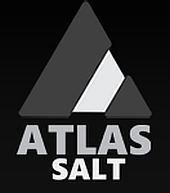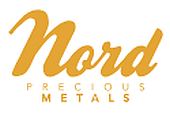 Crystal Lake study suggests high-grade targets at EL1
Crystal Lake study suggests high-grade targets at EL1
RESULTS SUGGEST MASSIVE NICKEL-COPPER TARGETS TO DEPTH
Crystal Lake Mining Corp. has released the first exploration results on its optioned property in Northwest Ontario referred to as the EL1 property.
The difficulty of finding a source of high-grade nickel-copper sulphides on a large mafic-ultramafic body prompted management to employ an interpretative study referred to as SGH (spatiotemporal geochemical hydrocarbons) in order to unravel surface mineralized trends and pinpoint targets. Crystal Lake is now confident that it has identified possible targets of nickel-copper mineralization on its EL1 property though this innovative nano-geochemical process.
SGH differs from conventional geochemistry as it is an organic, deep-penetrating geochemical survey which targets individual metals. In this instance, nickel, copper and platinum group elements were analyzed and presented as separate anomalies. SGH is the only known organic geochemical method that, in spite of the name, uses non-gaseous semi-volatile organic compounds interpreted using a forensic signature approach. The analysis involves the testing for 162 hydrocarbon compounds in the C5-C17 carbon series. These hydrocarbons have been shown to be residues from the decomposition of bacteria and microbes that feed on the target commodity as they require inorganic elements to catalyze the reactions necessary to develop hydrocarbons and grow cells in their life cycle. Specific classes of hydrocarbons have been successful for delineating mineral targets found at over 950 metres in depth. SGH is unique and should not be confused with other hydrocarbon tests or traditional analyses that measure C1 (methane) to C5 (pentane) or other gases; SGH does not analyze for any hydrocarbons that are actually gaseous at room temperature.
Interpretation, which led to deep targets on the EL1 property, was based solely on SGH data, and did not include the consideration from any other geochemistry (inorganic), geology or geophysics related to the survey area. The interpretation of the SGH data is in reference to a template or group of SGH classes of compounds specific to a chosen type of mineralization (that is, in this instance, copper, nickel and platinum). The SGH pathfinder class maps often illustrate an anomaly that is a vertical projection over mineralization at the shallowest location.
Results of the interpretation of the EL1 property suggest that the identified outstanding nested-segmented halo anomaly of the northern redox zone appears to vector to the source of the mafic intrusion where upwelling of mineralized fluids may have occurred. This is also expected to be the case for the central and southern redox zones; however, due to significant larger dispersion patterns, the intrusion as the source of the mineralized fluids is thought to lie at greater depth.
The SGH results at the L1 property survey illustrate separate anomalies with signatures associated with copper, nickel and PGEs. SGH has often successfully illustrated the zonation that may be present, which, together, describe the possible structure, in this case, for a Cu-Ni-PGE-type target. Based on the laboratory SGH rating scale of zero to six, the results of the Dobie intrusion study on the patented L1 ground have been rated from five to 5.5, indicating excellent drill targets. While complex in detail, SGH signatures of copper, nickel and PGE are overlapping zones define the deposit type quite well. However, the interpreter noted that, as platinum or other platinum group elements are far less mobile than copper, nickel or gold, any platinum that might be present is probably near the geometric centre of the redox cell and is at a much greater depth. PGEs may thus be at a depth that is not able to be detected with SGH. The SGH signature, therefore, for PGEs is given a lower rating of four out of six.
Wally Boguski, chief executive officer and president of Crystal Lake, states that: “We are extremely pleased about the SGH analysis as it is consistent with our belief that a source of massive high-grade nickel mineralization could be found at depth. We feel SGH significantly augments our understanding of the Dobie intrusion and near-surface disseminated nickel-copper mineralization. Drilling will follow.”
For further information on this exploration technique, the reader is referred to Activation Laboratories Ltd.’s website.
Paul Pitman, BSc, PGeo, is a qualified person as defined by National Instrument 43-101, and has reviewed and approved the technical contents of this press release regarding the EL1 project, Northwest Ontario.
http://www.sierrairon.com/news.html
































